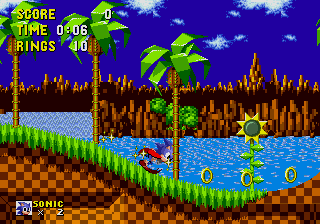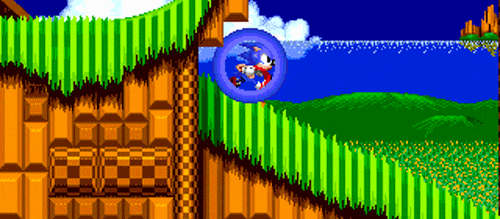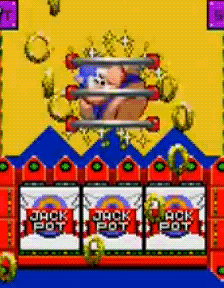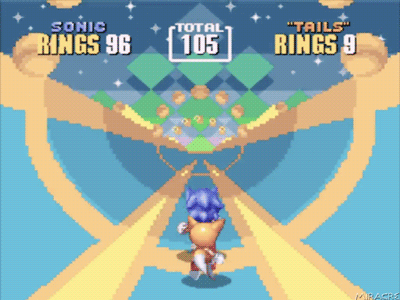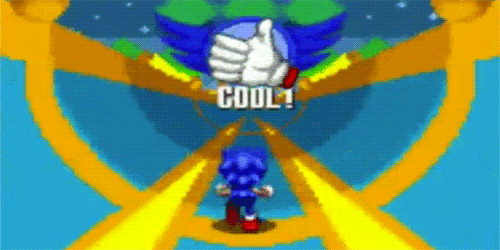Do you remember that day you received your first video game console? How about that time you discovered a secret stage that none of your friends knew about? Those days of being so excited for the latest iteration in a long-running series, only to be disappointed or have your expectations exceeded beyond your wildest dreams. That is what the Video Gamer’s Experience is all about. Now lets take a trip down this electronic memory lane.
By 1992, the Nintendo Entertainment System was practically dead in the water. New games were released rarely; and most of those games were terrible at best. Before the days of video game release information being at your fingertips via the Internet, to become knowledgeable of console game releases (or consoles in general) the gamer had to exchange currency for a little thing called a “video game magazine”. Yes, the once booming form of information helped gamers far and wide differentiate between the playable and unplayable. I, being only seven years old at the time, had no source of income other than my grandparents’ one-to-five dollar gift when visiting them. And even then, most of my money went to “X-Men” comic books when it came to reading material. So I was left ignorant about other gaming options.
Thankfully for the uninformed gamer in me, a weekend at my aunt Cicero’s house would open my eyes to the “future”. After a particularly cool summer day (featuring a hilarious morning spent with my mom as we thawed Cicero’s freezer and literally had to chop/beat a frozen turkey out of its icy tomb), I sat with Cicero’s future stepson, Reginald. Reggie, or “Boo” as we all affectionately called him, had the privilege of being one of those gamers who could find out what was going down in the video game world. In front of Reggie’s television sat an interesting black square. The golden, “16-Bit” logo gracing this square meant absolutely nothing to my uniformed mind. What did mean something was the blue ball blazing across the TV screen thanks to the 16-Bit-having square box made by some company called “Sega”. Wide-eyed and intrigued, I watched as the ball stopped moving to discover it wasn’t a ball at all, but a hedgehog wearing red shoes and rocking a Japanese anime style hairdo.
Being the annoying younger kid, I had to interrupt my cousin’s flow and ask for a chance to play this unbelievable looking platformer. Remember, the epitome of video game gorgeousness for me at this point was “Super Mario Bros. 3” (which was/is a great looking game in its own right). He promised to let me try, but only after he finished a few more stages. I watched for the next half an hour or so as “Boo” did his best to defeat the game’s main villain, The Egg Man. Wait, I mean Dr. Robotnik. After being handed the controller, I knew I needed this game and the system to play it. Over a year would pass until Christmas 1993 and the day I became the owner of a Sega Genesis. But the Genesis package I received for Christmas didn’t come with “Sonic The Hedgehog”, but its sequel, “Sonic The Hedgehog 2”. I was in for a brand new experience. But as they say, as much as things change, they also stay the same.
Did I Complete “Sonic The Hedgehog 2”?
As stated above, not much had changed when it came to “Sonic The Hedgehog 2” comparing the game to its predecessor on first glance. Even the first stage featured a similar environment as seen by “Sonic 1” players; though slightly better looking than in the original game. Even with that knowledge, I couldn’t be any less excited to pick up where I left off over a year ago. Taking my cousin’s advice, I did my best to avoid jumping underneath flying enemies, learning each stage’s hidden areas without the help of Youtube and collecting as many rings as possible. All the while saving capsuled baby animals our main villain seemingly wanted to blow up if Sonic didn’t save them in time.
The game eventually moved the player from the lush, almost tropical “Emerald Hill Zone” to industrialized areas (the “Chemical Plant” and “Oil Ocean” perfectly represented why Dr. Robotnik needed to be destroyed with his environmental waste dumping techniques) before reaching the visual heavens themselves.
My personal favorite stage to this day is “Casino Night” where the main character is trapped in a giant tribute to gambling. There’s probably no other stage I willingly spent more time in than “Casino Night”. Though I had many years to try, and invested countless hours, I never completed “Sonic 2” on the system it was made for.
Like every console before it (and most after), the Genesis became obsolete and entered my closet with no intention in mind to complete my first Genesis game. Then 2009 arrived. I was the owner of an Xbox 360 and the classic sequel had been digitally released through Xbox Live Arcade. At the cheap price of five dollars, I felt it was necessary to revisit my childhood. This time around I was better, smarter, and had an unyielding determination to finally do the seemingly impossible. It would take a while (hey, I have a life now!), but I eventually saw Dr. Robotnik’s giant, mechanized version of himself be destroyed. A victory sixteen years in the making.
Did “Sonic The Hedgehog 2” Live Up to the Hype?
Sega looked to build on the foundation set by “Sonic the Hedgehog” to provide a whole new experience. While the second iteration of the “Sonic” series offered the same fast-paced platforming action as its predecessor, there were some drastic differences from the first game to the second. The opening screen perfectly represented how the series looked to innovate when Sonic wais joined by a two-tailed flying fox named Miles “Tails” Prower (get it?). This gave gamers with friends a chance to play together through split screen. And if the two players didn’t want to team up, they could race each other during various stages head to head. It added a unique multi-player experience not thought about during the first game simply because the only character someone could play was Sonic.
Other improvements included redoing the Special Stages where Sonic, Tails or both (if you were playing with two players) would run down what appeared to be one long horizontal skate park featuring rings and bombs. While that might not sound like much of an improvement, for those who played the first game’s LSD-driven Special Stages would understand how fun the Special Stages were in the second game.
The music during these stages also stands the test of time just as much as the graphics. That’s right; even though “Sonic 2” came out in 1992, it still looks fantastic. The colors are vibrant. Each character is recognizable from big to small (even the freed animals can be identified for what they are thanks to their bright eyes and smiling faces).
Sadly, all the improvements weren’t positive. Sonic’s added Speed Dash maneuver could perform was iffy at best depending on the environment. Those players looking to dash across stages with reckless abandon would die quickly; causing the speed dash to become a rarely used technique during latter stages. In the end, “Sonic 2” was vastly superior compared to “Sonic The Hedgehog” – setting the bar high for any future sequels in the popular franchise.
Should You Play “Sonic The Hedgehog 2”?
An argument can easily be made that “Sonic 2” is the precipice of Sega’s mascot’s adventures. If not, at least most will say “Sonic 2” is the best two-dimensional version of the “Sonic” series. No matter where someone ranks “Sonic 2” against the other “Hedgehog” games, one can’t deny Sonic’s second exploits still holds up. It’s been released on various platforms including the aforementioned Xbox 360; perfectly capturing the simplicity that made 2D platforms of that generation the premier genre while not pacifying inexperienced gamers with a dumbed down version similar to other video game re-releases on various console platforms (“Final Fantasy IV”, I’m looking at you).
If you enjoy old school, 2D platformers that challenges you on a patient curve, have aged considerably well visually, and have a dislike for egg-shaped men, there’s no reason for you not to purchase “Sonic The Hedgehog 2” and feel good about yourself for saving some potentially endangered species.


